Let’s Get To Know The Mediterranean Cetaceans Together
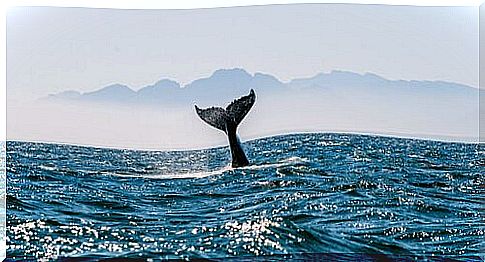
Cetaceans are among the most fascinating animals on earth. These marine mammals inhabit the seas all over the world, but in this article we will talk in particular about the cetaceans of the Mediterranean.
Both large and small cetaceans live in the waters of the Mediterranean: from dolphins to large whales and other cetaceans, they are all part of the different species of cetaceans in the Mediterranean . There are approximately 80 species of cetaceans in the world, and in the Mediterranean Sea we find eight of them:
The common dolphin
The common dolphin ( Delphinus delphis ) is very easy to distinguish: it has a dark region on its back and a lighter one that can even be cream in color. It is not as big as the bottlenose dolphin. It usually measures about two meters in length.

It lives in large groups of 200 individuals, although groups with thousands of specimens have been observed. Despite its name, the conformation of its groups is not well known, nor are its censuses.
The striped dolphin
One of the best known cetaceans of the Mediterranean is the striped dolphin ( Stenella coeruleoalba ). This animal is characterized by a series of stripes that combine dark blue with shades of gray and white and a line that crosses the nose and tail through the eye.

They are the dolphins that we see doing stunts, which usually stand in groups of hundreds of specimens. Its jumps can even exceed seven meters in height. Although it lives in other parts of the world, this species is quite abundant in the Mediterranean, where it exceeds 100,000 specimens.
The bottlenose dolphin: one of the most common cetaceans in the Mediterranean
Perhaps best known, the bottlenose dolphin or bottlenose dolphin ( Tursiops truncatus ) is the first animal to come to mind when it comes to dolphins.

More robust than the striped dolphin and larger, it has an entirely gray body. It lives in much smaller groups than the striped dolphin, which usually do not exceed 10 specimens, although large congregations can be formed.
They are coastal animals. Despite being well known, they are an endangered species, as only 10,000 specimens are found on the coasts of the Mediterranean.
The sperm whale
The sperm whale ( Physeter macrocephalus ) is a cetacean famous for having teeth. It actually has the largest teeth on the planet. It differs from other cetaceans in the Mediterranean in that it does not have a fin on its back, but rather a triangular hump.
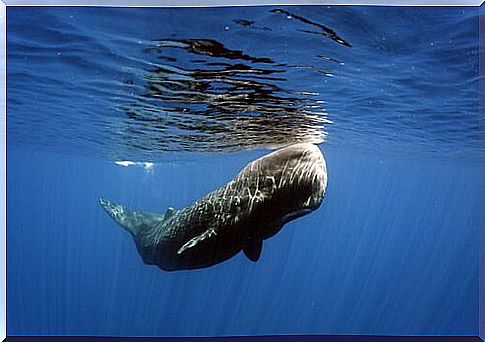
The breath it emits through the vent is deflected to the left. Its square head is huge and represents a third of the animal’s total length, which is around 20 meters.
Sperm whales are very shy animals and live in groups of about 15 animals. It is usually possible to observe them in ocean waters, where they swim deep, so they are the species that usually faces the mythical giant squid.
The fin whale among Mediterranean cetaceans
The fin whale ( Balaenoptera physalus ) is the largest of all cetaceans in the Mediterranean as it reaches 24 meters in length : in reality it does not reach the size of the blue whale, which is considered by far the largest species.
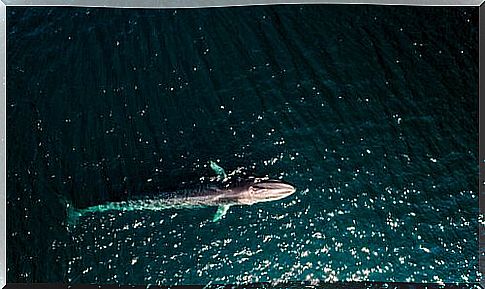
Fin whales are dark gray marine giants with white bellies. They have a rather small dorsal fin and the breath they emanate through the blowhole can reach eight meters.
They are not whales that come close to the coast, but can be found in the open sea swimming alone or in small groups with offspring, although on certain occasions groups of whales of this species can be observed. It is considered a vulnerable species in the Mediterranean and there are around 5,000 adults in these waters.
The pilot whale
The pilot whale is also called the pilot dolphin ( Globicephala melas ). It is considered the largest dolphin species in the Mediterranean Sea, as it reaches six meters.

It should be noted that pilot whales are considered dolphins, although their flatter snouts make them resemble other cetaceans of a different type.
The pilot whale is quite mysterious: although it forms larger groups than the stem, its conservation status is unknown.
The grampo: among the most particular Mediterranean cetaceans
The Risso’s dolphin or Risso’s dolphin ( Grampus griseus ) is a grayish cetacean, whose body fills with scars with age, so it ends up looking white.
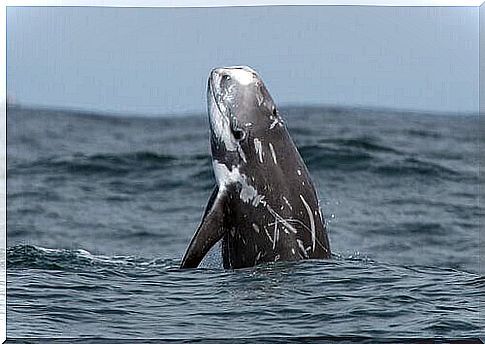
This is something very surprising that allows us to differentiate the species, although the cause is not well known. Scars and wounds in cetaceans are common, but the case of the stem is quite extreme. They form groups of up to 50 individuals and the conservation status of the species in the Mediterranean Sea is unknown.
The zifio
Zifio is one of the lesser known cetaceans and Cuiver’s zifio ( Ziphius cavirostris ) is no exception. This dark cetacean of about seven meters lives in small groups and in deep water.
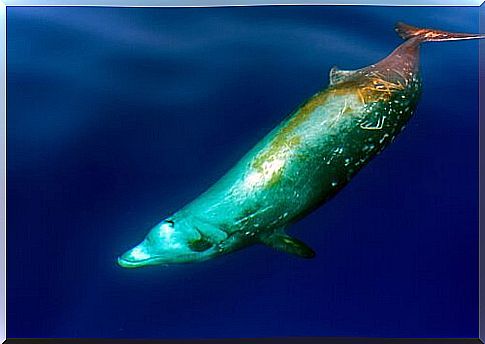
That is why they are little known, despite their striking appearance. The muzzle of the zifio is prominent and has a pair of teeth in the lower jaw, which protrude and give it a somewhat grotesque appearance.
Furthermore, these teeth are often the protagonists of fights and are responsible for the fact that the zifio often sports rather evident scars, similar to the pilot gray whale. This phenomenon can be observed when these animals appear dead on the coast.
Threats and curiosities about Mediterranean cetaceans
Although they are not considered to be residents of the Mediterranean, killer whales are quite present in these waters. This is because they are habitual residents in the Strait of Gibraltar, where they have perfected bluefin tuna hunting techniques.
All Mediterranean cetacean species are threatened to a greater or lesser extent. The main reasons are: overfishing, seismic surveys and noise pollution, oil exploitation, climate change and plastics.
That is why it is vital to protect whales by establishing nature reserves such as that of the Balearic Islands and to prevent them from being hunted. Only in this way will whales and other cetaceans continue to populate the Mediterranean.









